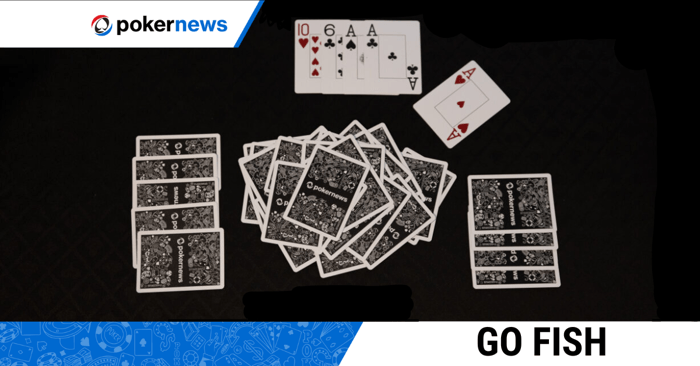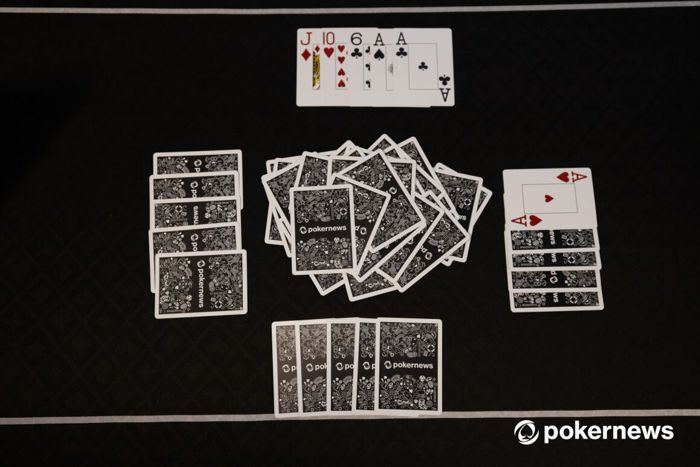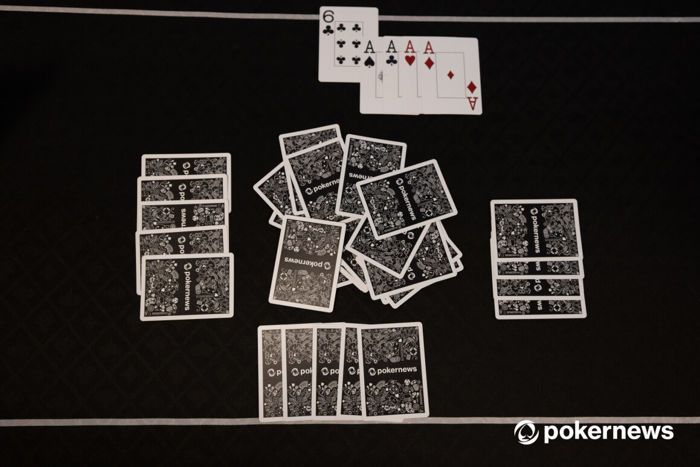Learn How to Play the Card Game Go Fish - Rules and Strategies

Go-Fish: A Popular Family Card Game for All Ages
Go-Fish is a fun and easy-to-learn card game that's great for family game nights, casual gatherings, and can even be played online. The basic mechanics involve asking for cards, responding to requests, and drawing new cards from the deck. The objective of the game is to collect as many sets of four identical cards – these are known as "books." Now, let’s dive into the gameplay mechanics and learn how to play Go-Fish.
Learn more about Go Fish:
Asking for Cards
In Go-Fish, when it’s your turn, you ask another player for a specific card rank, with the aim to make a book. Here’s how to master the art of asking:
- Be sure to ask for a card that you already have at least one of in your hand. This increases your chances of making a book.
- Try to remember the cards that other players have requested in previous turns. This can give you a clue about which cards they might be holding.
- Utilize strategy – if you notice a particular card has not been mentioned much, it might be safer to ask for it, as it could still be plentiful in the deck or other players' hands.

Asking other players effectively is a key strategic element in Go-Fish and can give you a significant advantage.
Responding to Requests
When someone asks you for a card and you have one or more of that rank, you must give it to them. If not, you tell them to 'Go-Fish', which prompts them to draw a card from the deck. Here's some strategy when responding:
- Keep a poker face. You don't want to give away if you have multiple cards of the requested rank.
- Pay attention to what cards are being asked for and who is asking. You can use this information on your turn when it's time to ask others for cards.
Knowing how to respond can help you to control the flow of the game and possibly protect your books.

Drawing Cards
If the player asked doesn’t have the requested card, the asking player must draw a card from the deck – the "Go-Fish" moment. When you draw, keep these tips in mind:
- If you draw the card you asked for, you get to go again. Use this as an opportunity to potentially create a book.
- If the deck runs out, keep playing until someone wins or no more books can be made.
- Drawing from the deck adds an element of luck – and it's important to adapt your strategy based on your new hand.
Drawing cards is an essential rule that adds an element of unpredictability to Go-Fish and keeps the game exciting for players of all ages.
By understanding these fundamental gameplay mechanics of Go-Fish, you’ll be well on your way to becoming a skilled player. Remember, while there's an element of luck, tactics like memorizing cards and strategic asking can give you an edge over your opponents.
The PokerNews team is excited to help you understand more about Go Fish, a classic and widely enjoyed card game suitable for players of all ages. In this introductory section, we'll explore the fundamentals of Go Fish, its brief history, and the reasons behind its enduring popularity.
The game's origins can be traced back to the early 20th century, and its straightforward rules make it accessible to both beginners and seasoned card enthusiasts. People are drawn to Go Fish for its social nature, strategic elements, and the thrill of collecting sets of matching cards. Whether played casually among friends or as a family pastime, Go Fish continues to captivate players, making it a timeless choice in the realm of card games. Let's dive into the rules and strategies that make Go Fish a delightful and enduring card game experience.
Go Fish Rules - How to Play Go Fish
Go Fish is a popular card game known for its simplicity. To set up the game, a standard 52-card deck is typically used for two to six players. The objective is to collect pairs of matching cards, known as "books," through strategic asking and matching. Each player is dealt a hand of five cards, and the remaining cards form the draw pile. The player who is the first to run out of cards or collect the most books at the end of the game is declared the winner.
The game begins with the first player asking an opponent for a specific rank of card, such as asking, "Do you have any threes?" If the opponent has the requested card, they must relinquish all matching cards to the asking player, who then gets another turn. If the opponent does not have the requested card, the asking player draws from the central pile.
One key strategy in Go Fish is to pay attention to the cards being asked for and those collected by opponents. This information helps players make educated guesses about where to direct their inquiries. Additionally, players need to be strategic about when to declare a set of matching cards to secure points.
Go Fish is a game that combines luck and skill, making it enjoyable for players of all ages. The simplicity of its rules and the thrill of trying to complete sets of cards contribute to its enduring popularity as a beloved card game. Now that we've covered the basic rules, let's delve into some effective strategies for success in Go Fish.
Go Fish Gameplay
Playing Go Fish involves a straightforward yet engaging process. The game typically starts with the dealer distributing five cards to each player. If there are more than four players, it's recommended to use two decks. The remaining cards form the draw pile, and players aim to collect as many matching pairs or "books" as possible.

The first player, often the one to the dealer's left, begins by asking any opponent for a specific rank of card they hold in their hand. For instance, a player might inquire, "Do you have any sevens?" If the opponent has that rank, they must hand over all their matching cards, and the asking player gets another turn. If the opponent does not have the requested cards, the asking player draws from the central pile.
One strategic aspect of Go Fish lies in paying attention to opponents' requests and sets. This information aids players in making informed decisions about which cards to ask for and which to avoid. Beginners should focus on building their own sets, while more advanced players can employ tactics to deduce opponents' holdings.
A key strategy is to observe when an opponent is close to completing a set and try to disrupt their plans by withholding the needed cards. Additionally, bluffing can be effective in creating uncertainty among opponents.
For beginners, it's essential to familiarize themselves with the ranks and suits of the cards. As players gain experience, they can refine their strategies by observing opponents' behaviors and making strategic decisions based on the evolving game dynamics.
With these insights into Go Fish gameplay, players can approach the game with a combination of skill and tactics, enhancing their chances of success and enjoyment. Now, let's explore some additional tips to elevate your Go Fish skills to the next level.
Go Fish Variations and Custom Rules
Go Fish is a versatile card game with various adaptations and custom rules that players often introduce to add an extra layer of excitement. While the classic version follows the basic rules of collecting pairs, players sometimes opt for variations to keep the game fresh and entertaining.
One popular variation involves introducing special "action" cards, such as skip or reverse cards, which can alter the course of the game. These cards often come with unique instructions, adding unpredictability to the gameplay.
Another common custom rule involves setting a time limit for each turn, adding a sense of urgency and preventing players from overthinking their moves. Additionally, some players incorporate a scoring system to determine the overall winner based on the number of pairs collected during a set number of rounds.
House rules can vary widely and are often agreed upon before the game begins. Some groups may introduce penalties for certain actions or establish specific conditions for winning bonus points. These variations allow players to tailor the game to their preferences and create a personalized gaming experience.
Whether playing with traditional rules or experimenting with variations, Go Fish remains a flexible and enjoyable card game that can be adapted to suit the preferences and creativity of the players involved. Customizing rules adds an element of surprise and ensures that each session of Go Fish is a unique and entertaining experience.
Quick Guide - Playing Go Fish in 5 Easy Steps
Embarking on a game of Go Fish is a delightful journey that unfolds in five simple steps. Begin by dealing out the entire deck of cards among the players. The objective is to form pairs of cards, and the player with the most pairs at the end wins. Next, each player scans their hand for pairs and places them face-up in front of them.
Now, the game truly kicks off as the first player asks an opponent for a specific rank of card, aiming to find a match for a card they already hold. If the queried player has the requested card, they must relinquish it. Otherwise, the asking player draws from the central pile. Successful matches are set aside and play proceeds to the next person.
The fourth step involves strategic decision-making as players remember the cards requested and adjust their queries accordingly. The game continues until all pairs are formed.
Frequently Asked Questions (FAQs)
How many players can play the Go Fish card game?
Go Fish is a versatile card game suitable for three or more players. While it can accommodate larger groups, it tends to shine in smaller settings, ensuring an enjoyable and engaging experience for all participants. The more players, the more dynamic the game becomes, offering a blend of strategy and social interaction.
What happens if you don’t have any cards you were asked for in Go Fish?
If a player is unable to fulfill a card request, they go fishing. This entails drawing a card from the central pile. This adds an element of unpredictability and excitement to the game, as players aim to collect the cards they need to form pairs and progress towards victory.
Can you play Go Fish with a standard deck of cards?
Absolutely. Go Fish can be played with a standard 52-card deck. It's one of the game's appeals, as it requires no specialized equipment, making it accessible to anyone with a standard deck of playing cards.
Are there any advanced strategies for winning in Go Fish?
While Go Fish is often considered a game of chance, strategic players can enhance their chances of winning. Advanced strategies involve tracking opponents' moves, predicting likely card holdings, and adjusting queries based on observed patterns.
Is there a recommended age for playing the Go Fish card game?
Go Fish is suitable for a broad age range, making it an excellent choice for family game nights or gatherings. It's particularly well-received by children aged 4 and older, fostering cognitive skills and social interaction in an entertaining manner.
